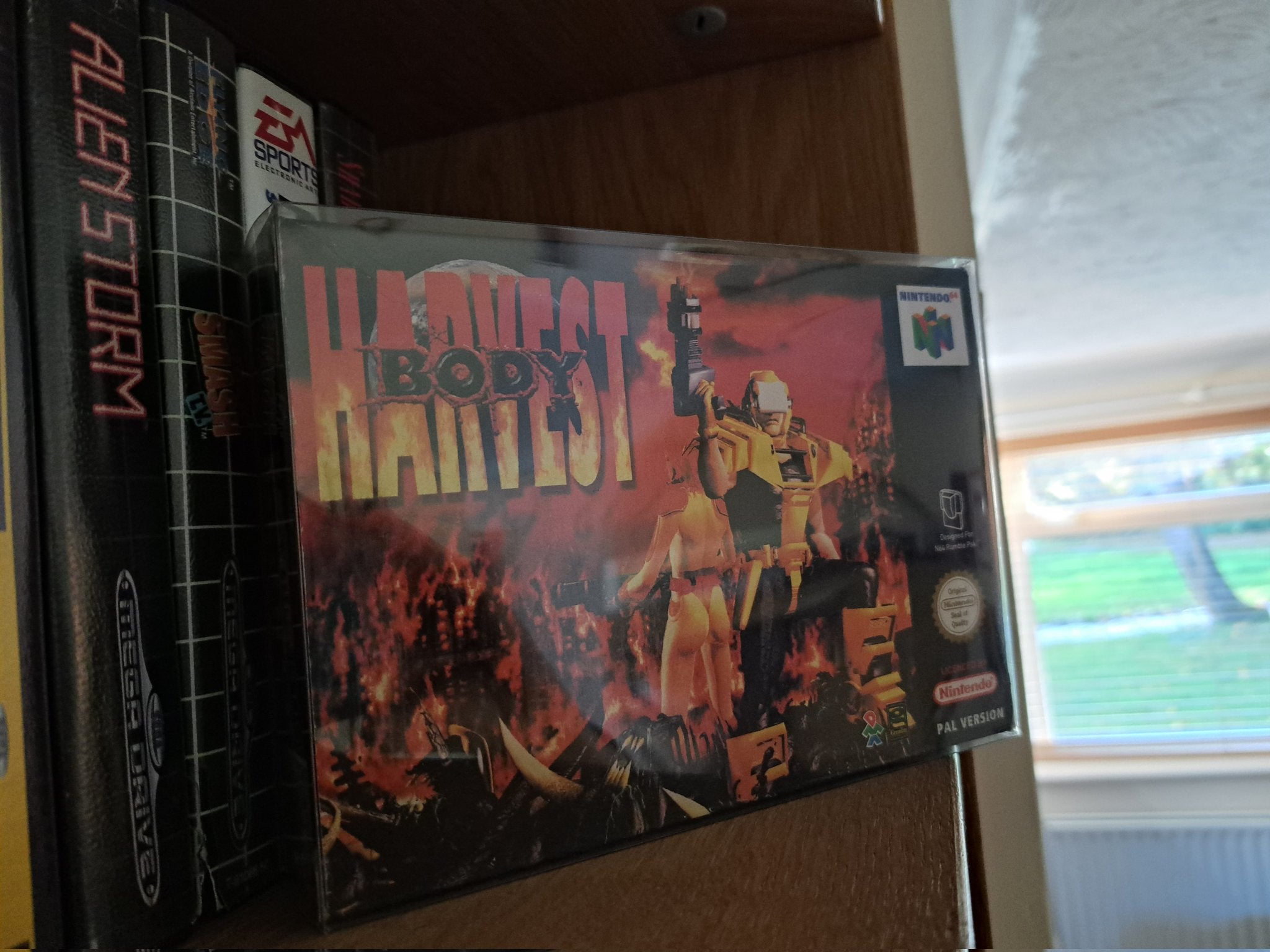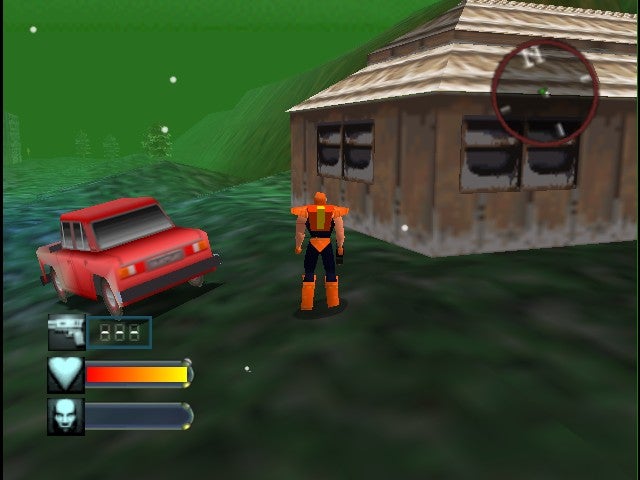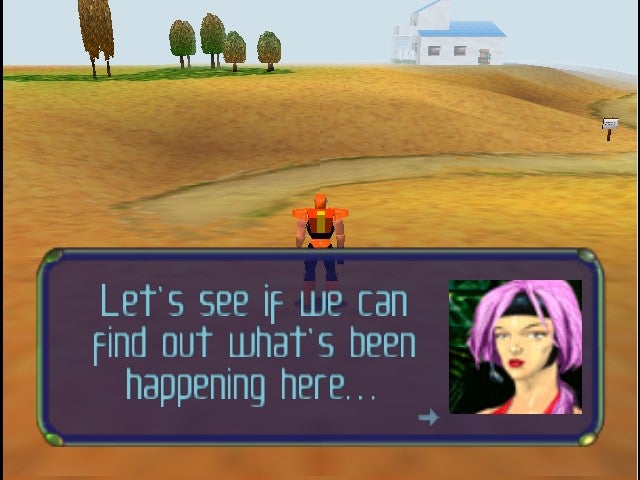Maybe that perception would have changed if Nintendo hadn’t decided to part ways with DMA Design, the studio that would go on to become the all-conquering Rockstar North. But Body Harvest, the game that emerged from the curtailed relationship remains a cult favourite, and the tale behind its development contains many twists and turns. DMA began life in the late 80s, formed by Scottish entrepreneur and programmer David Jones, and initially developed games for chiefly the 16-bit computers such as the Commodore Amiga. Joining it a year later was artist Stacey Jamieson. “One day, my mum saw an advert in the newspaper and said, ‘you love art, and you love games - why don’t you apply for this?’ So I did.” Jamieson worked on several games, including Oh No! More Lemmings and Lemmings 2. “Back then, DMA was housed in an old tenement building in Dundee,” he recalls. “The initial office was a collection of small rooms and a toilet that shook the wall when it flushed.” On the back of Lemmings’ incredible success, DMA gained international recognition and soon moved to a bespoke office park called Discovery House. Meanwhile, buoyant from the success of its 16-bit powerhouse, the SNES, Nintendo began an aggressive expansion plan in the mid-90s, targeting UK developers to form part of an exclusive line-up for the launch of its next console. “I remember being told of the new Nintendo machine and how we would be a first-party developer,” remembers Jamieson. “For the launch of the Ultra 64, we were part of Nintendo’s ‘dream team’ and had the t-shirts to prove it.” DMA began brainstorming ideas for the first of its three contracted games on what would turn out to be the Nintendo 64. One idea that stuck was combining the same open-world aesthetic that had inspired another DMA game, Grand Theft Auto, with a B-movie ambience. Brian Baglow, part of the design team for the game, explains, “It was the B-movies of the 50s that really gave [Body Harvest] its heart: The Blob, Them, even Plan 9 From Outer Space.” In the finished game, the backdrop is substantially different from DMA’s opening plans, and there are few sci-fi plots as calamitous as Body Harvest’s. A vicious race of aliens has been landing on Earth every 25 years for a century. Beginning in 1916, in Greece, each time the insect-like aliens set up an impenetrable perimeter shield, simultaneously preventing those trapped inside from escaping or help arriving from outside. Throughout two subsequent visits, the aliens harvest billions of humans until, in 1991, the remaining human forces set up a valiant last stand on the plains of China. They are wiped out, and now the remnants of humanity live on Station Omega, a secret research facility in orbit above the planet. But there’s hope: the boffins on Station Omega have devised a time drive capable of sending one person back in time and stopping the invasions - before they start. “The notion of evil aliens showing up at various points in Earth’s history to harvest humans for food and resources was so cheesy that it fit into Nintendo’s family-friendly ethos while giving the game a real differentiator in terms of look and feel,” says Baglow. The ambitious game design, wrapped up in an open-world, third-person view, has the player using vehicles to move around and achieve their objectives, ostensibly killing the massive alien invaders. Given Japan’s love of monstrous disaster movies such as Godzilla, it’s perhaps no surprise the concept for Body Harvest appealed to Nintendo; but it had already become endeared to the soon-jettisoned 50s premise. Nevertheless, having also impressed with its SNES game, Unirally, DMA signed, and Body Harvest became one of 13 proposed launch titles for the Nintendo 64. But production stumbled, and with Nintendo keen to imbue Body Harvest with RPG elements, a team from DMA was invited to Nintendo’s headquarters in Kyoto, Japan. One member of this honoured party was Stacey Jamieson, the lad from Forfar. “It was a huge culture shock right from the moment we stepped on the plane,” he says. Unsurprisingly, Stacey and his colleagues had no previous experience of flying business class and looked suitably incongruous among the rows of suits. “I think we looked so out of place that halfway through the flight, the stewardess came over and politely asked if we were in a band! To this day, we regret not saying yes as she looked disappointed when we told her we developed games.” Once Jamieson and his colleagues landed, things got even stranger for the young developers. “We were filled with excitement at how wondrous the Nintendo offices would be, full of colour and fun,” he recalls. The reality was somewhat different. “Our car pulled up in front of this non-descript grey box of a building, and we were disappointed in how corporate and bland everything was. My dreams were smashed!” The DMA studio, a bustling hub of chatter and noise, populated by employees dressed in ripped jeans and t-shirts, was a world away from the quiet, business-like atmosphere of Nintendo HQ, all its workers dressed in grey overalls. Body Harvest had been struggling, its development hampered by the new technology. “As I recall, the development tools were never quite up to scratch,” remembers Baglow. “There was a constant struggle to get the dev kit to do what was needed and what was claimed in the specification. And because it was proprietary tech, we couldn’t even engineer our own solutions to the problems.” The delays led to an initially frosty reception for Jamieson and his colleagues in Kyoto before they received an enlightening peek at Nintendo’s inner workings. “Rooms were filled with post-it notes, and pages of images were plastered on every single space on the walls,” says Jamieson. “When you stepped into these rooms, you were almost stepping inside the game. And there were mattresses on the floor where the designers sometimes slept.” Throughout the 12-day visit, Nintendo and DMA designed levels, puzzles and gameplay as the two companies attempted to hammer out an agreed basic template for Body Harvest. With the rest of DMA’s trip involving an education in the ‘Nintendo way’ of game design and production, the most significant cultural shift was the diet, as Jamieson painfully recalls. “First time with chopsticks. First time eating raw beef. And dishes with tentacles sticking out of the bowl. These are normal to me now, but terrifying back then, and we were so hungry, we went to the local 7-11 to get something more ‘Scottish’.” When Jamieson spotted some sugared doughnuts, it appeared to be the ideal solution to their hunger. “Imagine our shock when we bit into them, and even these had jam and a sausage inside!” For Jamieson, one meal out was particularly uncomfortable as he accidentally spilt blood on Shigeru Miyamoto before unwittingly pinching the Nintendo legend’s beer. Upon their return to Scotland, Jamieson and his colleagues resumed work on Body Harvest. Yet while the DMA team had gained much valuable knowledge regarding the game’s basic design and the idea of an RPG-lite action adventure, a more serious schism continued to evolve on the project’s overall theme. The original B-movie schtick had fallen away, replaced with the somewhat more gruesome scenario described above. And the issue wasn’t just between DMA and Nintendo. “Nintendo of America thought [the time travel plot] was fine, but would rather it was more detailed and complex,” DMA designer Steve Hammond wrote on Scottish Games Network’s website in 2012. “Nintendo of Japan wanted it simplified.” Having firstly wanted to evolve Body Harvest beyond its original arcade-style gameplay into an RPG, it now appeared that Nintendo Japan wanted a return to the original, more straightforward gameplay style. “Nintendo knew what they wanted and knew when they weren’t getting it,” continued Hammond on Scottish Games Network. “The trouble was, Nintendo often didn’t know what they wanted, and they definitely knew when they weren’t getting that.” The tone of Body Harvest was another problem. Faxes went backwards and forward as the yawning chasm in style continued: Nintendo wanted something family-friendly to fit in with the Nintendo 64’s demographic, while DMA was designing something rather different. The cultural differences, spread across three different continents, added another challenge. “The team at DMA saw nothing in the game that was particularly gratuitous,” recalls Baglow. “Yes, people were getting eaten by giant bugs, but it was hardly mature content. I suspect the pressure may have been on Nintendo to ensure that all [of its] titles were super-slick and hit its core family demographic.” But despite everything, it was ironically time that put paid to Body Harvest for Nintendo, or rather lack of it. When the DMA trip to Kyoto took place in the February of 1997, the Nintendo 64 console had already been on the US and Japanese markets for months, while a European launch was imminent. Body Harvest’s inclusion as a launch title wasn’t happening, as its ambitious scope had taken its toll. The DMA design and tech teams, tackling concepts and gameplay never seen before in a 3D environment, were stretched. As a result, the third game in its deal with Nintendo, Zenith, was abandoned, and some of its team - unhappily - moved across to Body Harvest, with project leader John Whyte doing his best to keep everybody happy and motivated. “It was a horrible case of overambition,” he told Edge magazine in 2009. “We didn’t have any idea of what we were getting into at the start.” For Nintendo, time had run out, and it cancelled its deal with the Scottish developer sometime later in 1997. “It was quite a blow as so many people on the team and within DMA were Nintendo fans,” notes Baglow. “However, from a business point of view, it wasn’t actually that bad.” By this point, DMA had hit big with the first game of its Grand Theft Auto series, and Sheffield-based Gremlin Interactive had already purchased the developer, chiefly on the back of its incredible success with the Lemmings franchise. Recalls Baglow, “They sent me out to San Diego to pitch [Body Harvest] to Midway, and they snapped it up for publication in North America.” In Europe, Gremlin handled Body Harvest as, having battled conflicting design documents, technological barriers, elaborate gameplay goals and a mass walk-out of half its development team, it finally saw release in October 1998 alongside the other finished game of the original Nintendo deal, Space Station Silicon Valley. Unfortunately, it was also around the same time as Rare’s Banjo-Kazooie and the masterpiece RPG that Nintendo had always wanted, The Legend Of Zelda: Ocarina Of Time. The result was a moderate Nintendo 64 hit that failed to dent the vital all-format chart, a victim of bad timing and the dwindling popularity of the Nintendo 64. However, today, Body Harvest has a cult following. Looking back, it’s possible to appreciate how its team attempted to create something different, welded to an emergent dimension for gaming and a new console that wasn’t quite up to handling this exciting combination. Furthermore, its experience with open-world design and philosophies, always a fond concept of the developer, helped funnel DMA’s smash hit Grand Theft Auto into the third dimension with GTA3 in 2001. “I love Body Harvest,” concludes Baglow. “It’s one of the games that I still get asked about to this day and that many players remember very fondly. It had many problems, and it faced many challenges - but I’m still very proud of it.”





